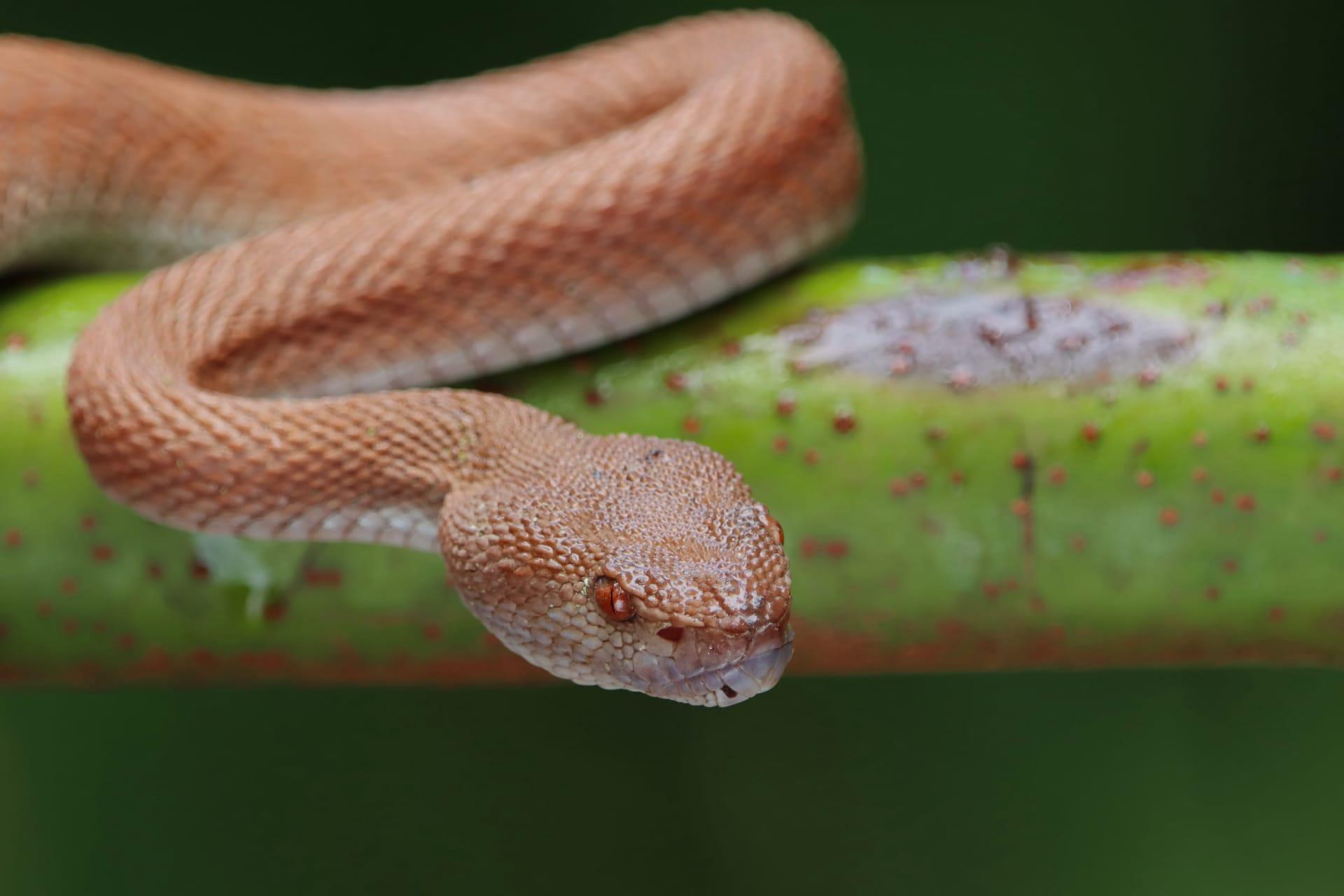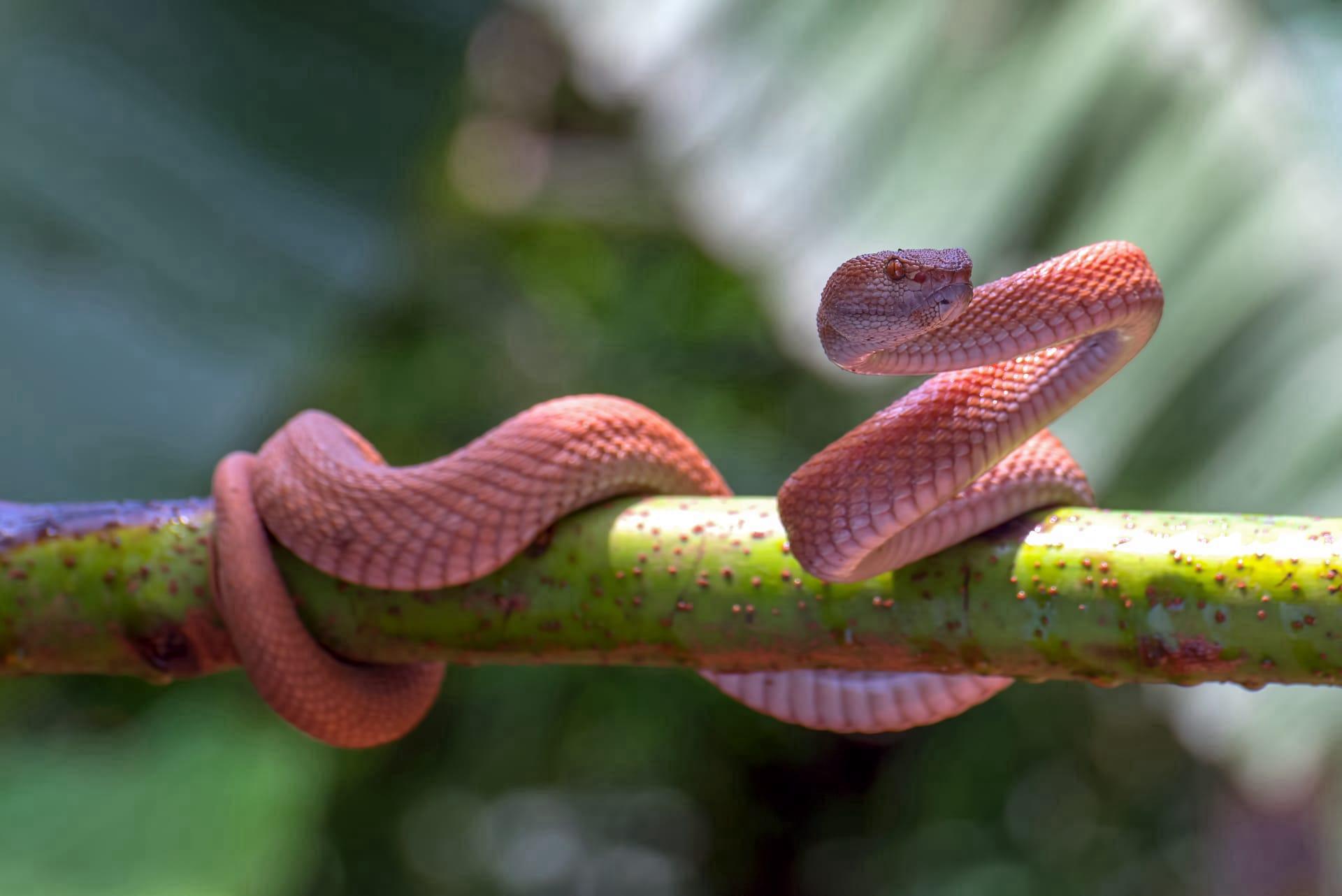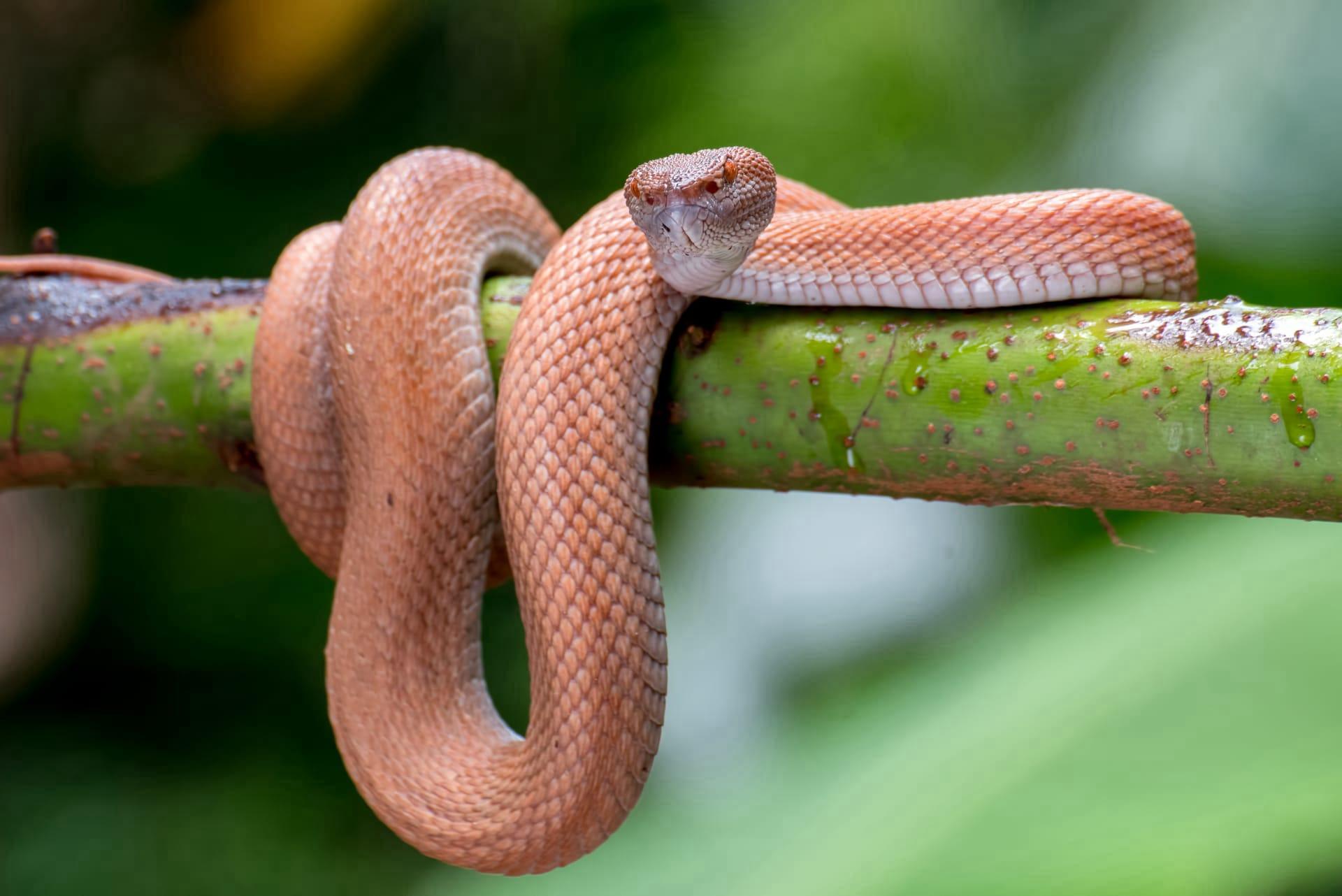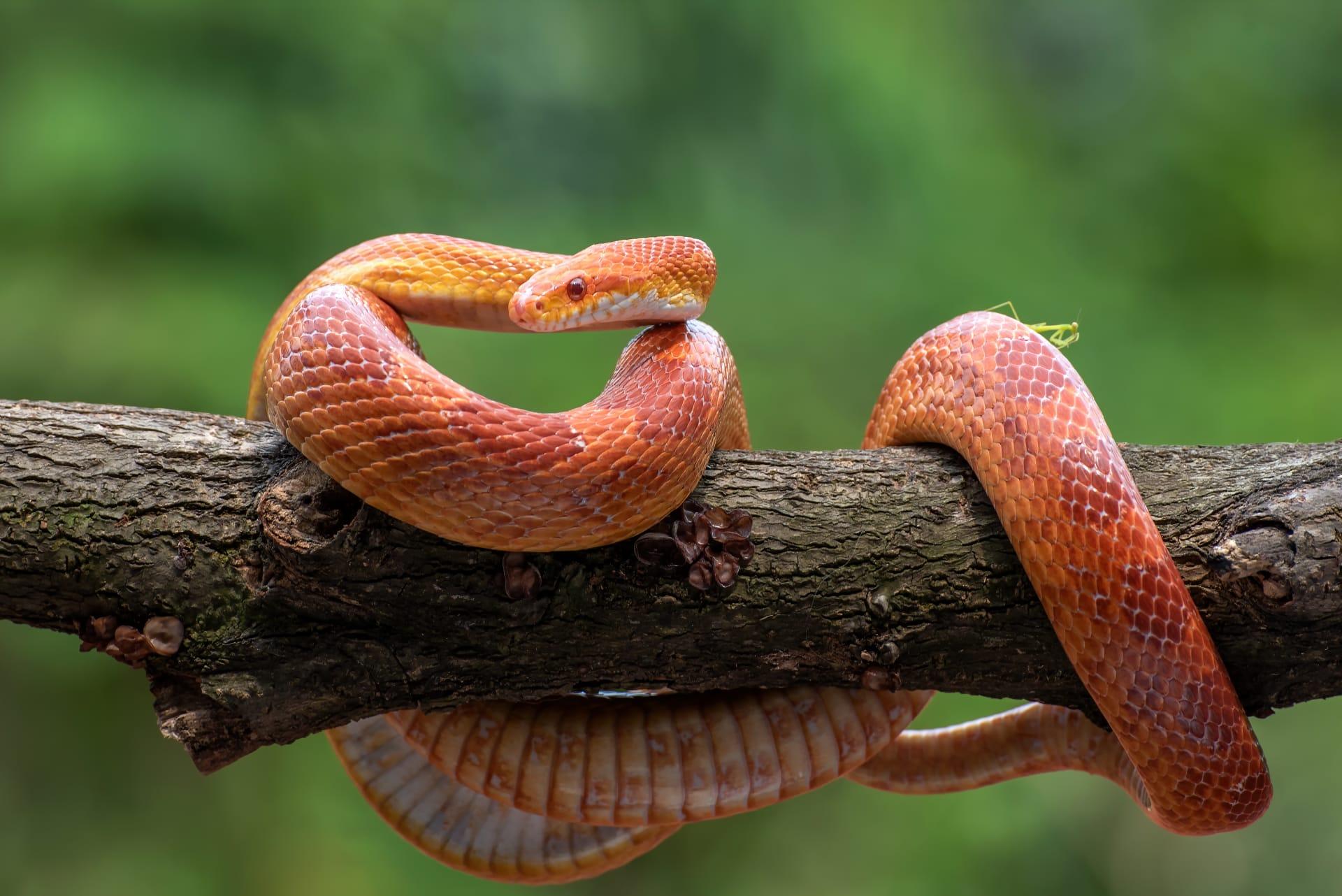Pink Snake Characteristics
- Home /
- Mini Encyclopedia /
- Animal /
- Pink Snake Characteristics
1
Pink snakes, a distinctive group in the serpent world, are known for their unusual coloration which ranges from a soft blush to a vivid magenta. On average, these snakes measure between 20 to 30 inches in length. Their slender bodies are adapted for agility and stealth in their habitats. Pink snakes, depending on the species and environmental conditions, can live up to 10-15 years in the wild. Their vibrant color is not just for show; it plays a crucial role in their survival, helping them blend into flowering plants and coral environments.
The most remarkable organ of the pink snake is its tongue. Contrary to popular belief, the snake's tongue isn't just for sensing smell. It's a highly sophisticated sensory tool that collects airborne particles. The forked design allows the snake to detect scent trails from different directions, enabling it to navigate and hunt with precision. This sensory ability is complemented by the Jacobson's organ in the roof of their mouth, which analyzes the collected particles, offering the snake a detailed understanding of its surroundings and potential prey.

2
Question: Why are Pink Snakes pink? Is it due to their diet or genetics?
Answer: The pink hue of these snakes is primarily due to genetics. It's a result of the unique distribution and concentration of pigments in their skin. Unlike some reptiles whose color can change based on diet or environmental factors, the pink snake's coloration is genetically determined and remains consistent throughout its life. This genetic trait not only defines their appearance but also serves as an effective camouflage, particularly among flowers and shrubs where they often reside.

3
Pink snakes exhibit remarkable locomotive characteristics. They are known for their swift, smooth gliding movement, allowing them to traverse various terrains with ease. Their slender, muscular bodies facilitate a form of movement known as 'lateral undulation,' where the body moves in a series of S-shaped curves. This efficient movement pattern enables pink snakes to navigate through tight spaces and over rough surfaces without expending excessive energy.
In terms of hunting, pink snakes are primarily ambush predators. They rely on their ability to remain undetected in their colorful environment to catch prey off guard. Once a potential meal is within reach, they strike quickly and with precision. Their diet mainly consists of small rodents, birds, and occasionally insects. The pink snake's hunting strategy is a combination of patience, stealth, and swift action, making them effective predators in their natural habitat.

4
The natural habitat of pink snakes varies, but they are predominantly found in regions with abundant floral growth, such as tropical forests, meadows, and occasionally in coral reef areas. These environments not only provide ample camouflage but also a steady supply of prey. The presence of water sources is also crucial, as it aids in their hydration and plays a role in their skin maintenance.
Reproduction in pink snakes involves unique mating rituals that can vary slightly by species. Typically, during the mating season, males engage in competitive displays to attract females. These can include a series of intricate dances or physical contests. After mating, females lay eggs, usually in hidden, safe locations like burrows or under rocks. The number of eggs varies, but on average, a pink snake can lay 5-10 eggs. The eggs hatch after about 2-3 months, and the hatchlings are independent from birth, ready to fend for themselves.

5
Book: "In the Shadows of Pink: The Life and Habits of Pink Snakes" by Dr. Helena Martins. Published in the United States in 2018, this book offers an in-depth exploration of the pink snake species. Dr. Martins, a renowned herpetologist, delves into their behavior, habitat, and the unique challenges they face in the wild. The book combines scientific research with captivating narratives, making it an engaging read for both experts and enthusiasts.
Book: "Pink Mystique: Unraveling the Secrets of Pink Snakes" by Professor Liam Thompson. This 2020 publication from the United Kingdom provides a comprehensive overview of the pink snake's physiology and ecological impact. Professor Thompson, with his extensive fieldwork, brings to light the lesser-known aspects of these creatures, including their role in their ecosystems and the myths surrounding their vibrant appearance. The book is well-received for its accessible language and informative content, appealing to a broad audience.